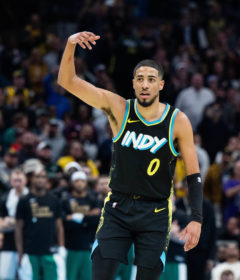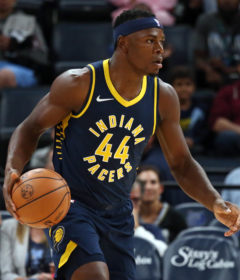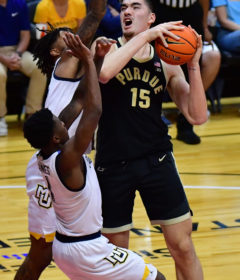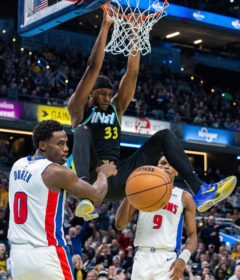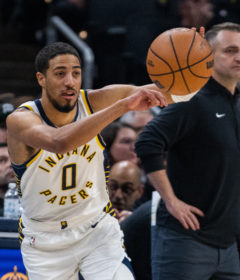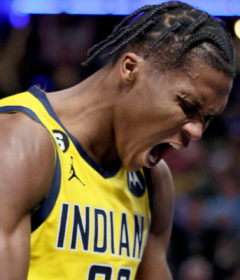Purdue ready to make splash as Big Ten play begins
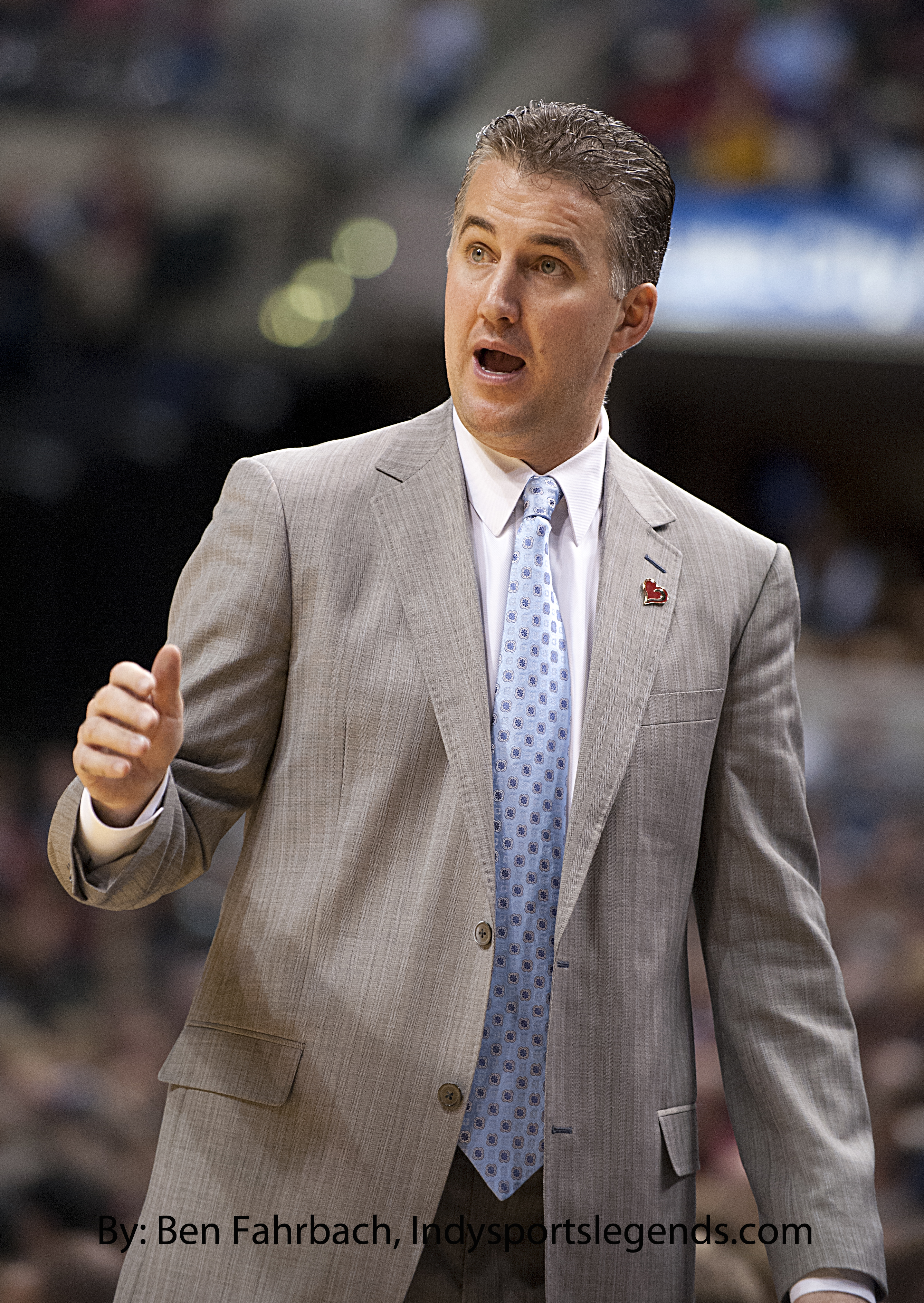
By KEITH CARRELL
ISL Correspondent
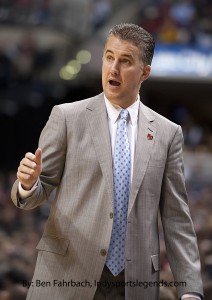
Purdue will begin Big Ten play at Wisconsin on Tuesday night, interim Badgers head coach Greg Gard’s first at the helm in a Big Ten game after Bo Ryan announced his immediate retirement earlier in December.
The Boilermakers wrapped up non-conference play on Tuesday with a win over Vanderbilt at home to earn a record of 12-1; the only loss came to Butler in the Crossroads Classic. Purdue is off to one of its best starts, and has perhaps its deepest team in Matt Painter’s eleven years as head coach for the Boilermakers.
Expectations are high for the Boilermakers as the 18-game regular season Big Ten campaign begins. With all of the optimism around the team, it can be easy to overlook the flaws the team must overcome in order to attain their goals of a Big Ten title and Final Four run.
Here is a video from Purdue Athletics, then a player and conference breakdown:
Tenacity & teamwork aren’t just slogans on a shirts. It’s a way of life at #Purdue. The #DriveFor23 starts tonight! https://t.co/1blBcl3RWI
— Purdue Basketball (@BoilerBall) December 29, 2015
The Starting Five:
P.J. Thompson:
Thompson began the season coming off of the bench behind graduate-transfer Johnny Hill, but his play and effort early in the season allowed him to take the starting role, and he has continued to be one of the most efficient point guards in the country (37 assists with only 7 turnovers in 273 minutes of action this season). He has been scrappy, diving for loose balls and stealing rebounds away from opposing forwards and centers when they bring the ball in too low — a signature move that cost him all but the first three minutes of the Youngstown State game after receiving an unintentional elbow under his eye which required stitches. Thompson will continue to split time with Hill at the point and his aggressive play will be needed against Big Ten competition as the season progresses, but he’ll also need to continue to work on his offensive passing more to ensure the team can get into the flow of the offense earlier.
Rapheal Davis:
The undisputed leader of the team began the season strong, showing flashes of his all-around game, most notably improvements on the offensive end where he became a better finisher as a slasher as well as his much-improved three point shooting. Davis had a minor setback prior to the Florida game where he suffered an MCL sprain during practice which caused him to miss the ensuing four games. He has since returned to the starting lineup, but aside from a few runouts and idling in the wings for open threes, he has mostly focused on his defensive prowess where he shut down offensive stalwarts in Butler’s Kellen Dunham and Vanderbilt’s Riley LaChance, allowing a combined 0-18 from the field. He visually does not appear to be completely healed from the sprain yet, but Painter’s hope was the holiday break would allow him to rest and heal. Davis is the steadiest player and he will need to continue to be a lock-down defender and a leader, on and off the court. If anyone were to question what a lack of leadership can do to a team, the answer would be found no further back than the 2012-13 and 2013-14 seasons, where Purdue was rudderless which resulted in back to back losing seasons in the Big Ten.
Vince Edwards:
Edwards is from Ohio, but he may as well have been imported from Switzerland, because he is the ideal Swiss Army Knife for Purdue. With the talent on the team this year, Edwards’ numbers may not jump off the page, but he does all of the little things and does them well. He has the ability to be the star player and take control on offense or facilitate for his teammates to shine. He also has the ability to play three positions — shooting guard, small forward, or power forward – but is most effective as a forward. Edwards’ array of tools will become exceedingly necessary as the season wanes on, as they did last season, to compete with the varying styles of play Big Ten opponents will throw at him. His ability to rebound from the wings and bust zones with midrange jumpers or swing passes will help to sustain runs in games.
Caleb Swanigan:
The five-star freshman power forward has been a big lift for Purdue already this season, netting multiple double-doubles and Big Ten Freshman of the Week awards. His unique skill set as a rangy, athletic big allows him to play or defend either the center or power forward positions. His biggest asset to date is his natural nose for the ball off the glass, but Swanigan has also contributed as a scorer, inside and out. Swanigan still needs to work on his defensive footwork and communicate better on switches and help defense in order to keep opponents from easy, inside dishes or outlets around the arc off of screens. The recent troubling issue is that Swanigan occasionally allows officiating or offensive struggles to affect the level of his effort, hustle, and becomes more careless with the ball (most notably against Butler). It will be interesting to see how he grows against a high level of competition every game. There were some rumblings early that he may be headed for the NBA after his first season at Purdue, but I’d expect him to remain at Purdue for at least two seasons before truly testing the waters and to have a legitimate shot at being a lottery pick in the draft.
Isaac Haas:
The Goliath that is Isaac Haas began the season as a starter by default with A.J. Hammons being held out of the first few contests for undisclosed reasons. He has grown immensely over the offseason and came out with a roar, earning the starting position through the remainder of non-conference action after Hammons returned. Haas still occasionally holds onto the ball too long or brings it down too low, but for the most part, he has become much more dependable when handling the ball in order to put up his own shot or facilitate to a teammate and has become a better rim protector. His shot is also much improved where he now has both a face-up and back-to-the-basket approach in his arsenal. He has been cold of late, but his high-percentage looks will again fall through the nets soon. That being said, just because of Hammons’ age, added athleticism, better rim protection, and inspired play of late, I would expect Haas to soon be the center coming off of the bench for Purdue, as he did in the 2nd half against Vanderbilt. Regardless of who starts, Haas and Hammons present a fresh, potentially dominant center with which to contend.
Key Reserves:
A.J. Hammons:
Hammons announced he would return to Purdue for his senior season in April and he followed that seemingly mature decision up by beginning the season in Painter’s doghouse. Since being reinserted into the lineup off the bench for Purdue, Hammons has returned to his high-contribution ways on offense and one of the best rim protectors in the country. Hammons’ best game may have been his most recent, against Vanderbilt, where over a dozen NBA scouts were in Mackey to see the anticipated matchup between him and the Commodores’ Damian Jones, a potential lottery pick. Hammons played well in the first half and started the second, contributing 21 points, ten boards, and seven blocks in the game. If Hammons continues to build on his resume since mid-last season, he may be able to overcome being tagged as not loving or caring about the game, in a similar way to Jay Cutler of the Chicago Bears. To overcome what Cutler hasn’t, Hammons must continue to contribute at a high level in order to help Purdue achieve its goals and for him to raise his draft stock, he could potentially even sneak into the first round.
Kendall Stephens:
Admittedly, I am extremely hard on Kendall Stephens. I see him as an immensely talented and smart basketball player, but one who can’t or won’t take his talents to the next level from good to great. He has the genes and ability to become a valuable shooting guard not just for Purdue, but also in the NBA. To accomplish either, he has to become more aggressive on offense, using his size to get around smaller guards and drive the lane, kick a pass, or stop and pop a shorter jump shot. Stephens has two choices, he can become a better version of E’Twaun Moore (a Purdue alum and current Chicago Bull who is a terrific 3-point shooter who understands the benefits of the extra pass, driving to the basket, and playing defense – but not with the size or wingspan of Stephens) or he can become a worse version of Gerald Green (a long-armed NBA journeyman who refuses to play defense and is known for jacking up threes when better shots or moves are available). If he truly wants to improve his game and live up to his potential as a complete player, he has to put in the time to study and improve his game. With the talent this team has, jacking up threes like IU’s head coach Tom Crean loves, is not the recipe for sustained success – working inside-out is that recipe. Look for Stephens to improve in those areas or continue to lose minutes to Mathias and Cline and waste his opportunity to play in the NBA.
Dakota Mathias:
Mathias’ play this year has been a bit sporadic; he has had good and poor shooting nights, good and poor passing nights, and good and poor effort nights. He has been asked to play some point guard this year to help give Thompson or Hill a rest, but primarily will stay on the wings as a three point shooter and passer. Purdue has always been a physical team, and the entire roster has had some struggles adopting to the new defensive officiating – having to use feet more and hands less. None more so than Mathias, who has been called numerous times this season for fouls by using his hands too much on guards. Aside from that fixable problem, in any given game, Mathias is likely contributing positively more than negatively, and his flexibility to play any of the guard positions has allowed him to earn more playing time than Stephens. As the season progresses, I would look for him to better his defensive footwork as well as his decision making. Once area Mathias will help is in an area Purdue has struggled in recent years _ breaking the full court press; he, along with Thompson and Ryan Cline, have the vision and handles to make the necessary moves to get Purdue across the timeline successfully and into an easy look on the other end. I’d look for that trio to continue to grow and thrive in those late-game situations.
Johnny Hill:
Hill may not be the best point guard in the country, he may not be the best point guard for Purdue (he isn’t), but he is what Purdue needed. The graduate-transfer represents a fresh set of legs and another guard who can drive to the basket and either shoot or kick out to open shooters. He also has been a solid on-the-ball defender against quicker guards, an area that Thompson sometimes struggles. The completely unfair thing to do would be to compare Hill to last season’s graduate-transfer point guard, Jon Octeus, who was the perfect fit and a high-caliber player. Hill Is not Octeus, but with Cline and Swanigan added to the fold, he doesn’t have to be, he merely has to be a smart, mature player who takes care of the ball.
Ryan Cline:
CBS’ Seth Davis tweeted during the Purdue game at Pitt, “Can’t you just picture Ryan Cline shooting threes by himself on a snowy court against a hoop on a barn,” where Cline exploded from three and on defense. And although that Davis might be a bit off on the Carmel-native, one really could picture Cline doing that, because his play illustrates his love of the game. He puts his whole body into the game and although he may make a mistake, they’re mistakes that coaches can live with (in small doses), because they stem from laying it all on the line. Cline will see sporadic playing time this year due the sheer depth of the team on the wings, but his ability to play either guard spot or small forward along with his attitude and ability to nail threes will continue to earn him playing time. It’s easy to see why, with Purdue’s potential this year, Painter elected not to redshirt Cline, but time will tell if he regrets that decision, as he did with another three point threat, Ryne Smith, a few years ago.
The rest of the team:
The remainder of Purdue’s roster is not expected to make an in-game impact this season, barring unforeseen circumstances, but they will undoubtedly help the team grow. Veteran Basil Smotherman asked to redshirt this year to allow time to refine his craft; fortunately for him and Purdue, that decision made his current hand injury less impactful. Freshman Grant Weatherford also is being redshirted this season, but is expected to make an impact in a Chris Kramer-esque way on perimeter defense next season. Jacquil Taylor is still getting back to full strength after injury held him out last season and Purdue’s depth at center and forward make it so there is no rush to that timeline. Stephen Toyra and Grady Eifert will see some minutes in mop-up duty, but have some things to celebrate as Toyra just got engaged on Purdue’s court after the Vanderbilt game and Eifert’s brother, Tyler, is having a stellar year as a tight-end for the Cincinnati Bengals. Jon McKeeman will also see some spot time in blowouts.
Individually there is a lot to look forward to if you’re a Purdue fan. By putting the parts together with the right mixture of chemistry and growth, Purdue has a legitimate shot at earning a Big Ten title and the tools to make a Final Four run. The Big Ten title is much more attainable, but neither are really absurd ideas for a team with this maturity, athleticism, and size. In the Big Ten, the teams most likely to compete with Purdue for the Big Ten crown are Michigan State and Maryland, but Wisconsin and Indiana should not be overlooked either. Michigan State got a bout of bad news when it recently learned Denzel Valentine would miss a few weeks due to injury and Maryland has already had one hiccup in a loss at North Carolina and struggled with Princeton prior to pulling away. Wisconsin is a wild card with a Bo Ryan designed team led by a coach with an on-the-job interview for the rest of the season.
Indiana is talented and could compete if the Hoosiers decide or learn to play team defense, their schedule is also favorable as they only face each of Michigan State, Maryland, and Purdue once this season. In order for the Boilermakers to win the Big Ten Title, they will need to become a more consistent team, rather than one of spurts; ensuring they continue to feed the posts will help in this area. In order for Purdue to be a real threat to reach the Final Four, Matt Painter and his staff must improve in their game planning, historically being outworked or out-efforted by Cinderella-type schools like Butler and VCU as well as continual flaws like inbounding the ball from the baseline (this is still an issue and Painter has been trying to find the right passer for these situations the last couple of weeks) and breaking the full court press.
Purdue’s first Big Ten home game will come in a matchup with Iowa on January 2nd.

